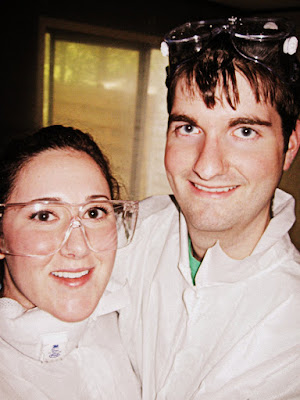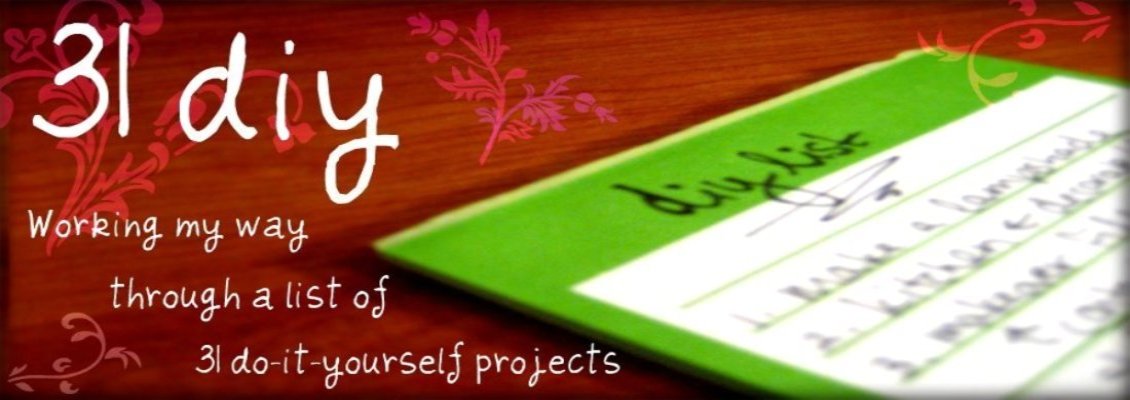I never thought I would be writing a post about scraping off popcorn ceiling texture, but alas here I am. It’s a long story. Here are the gritty details:
What made you decide to remove the popcorn ceiling texture, especially when you are a renter?
The hubs, bless his heart, forgot to turn off the water in the upstairs bathroom…for 15 minutes. I’ll give you a moment to let that sink in.
Basically, all the water that flooded the upstairs bathroom trickled down into the subfloor and the layer between the top and bottom floors. The water had to go somewhere, and that means there was a 4x6 foot wet spot on the ceiling of the downstairs dining/living room. So we tackled the upstairs floor first and just let the 1st floor ceiling drip and then air dry.
Once it had dried, I thought I could just paint over the water stain. Wrong! As I rolled the paint on, the popcorn was coming off in chunks. A mold scare (turned out to be a false alarm) and a failed attempt at using the popcorn texture you get in a spray can from Lowes (it’s really only meant to patch up small areas) later, we arrived at the decision that we needed to remove the entire thing. Apparently, even a professional “popcorner” wouldn’t be able to match the new popcorn to the existing stuff. We really needed to scrape off the texture from the entire 1st floor ceiling if we ever wanted to dream of getting our $750 deposit back. Plus, I’d rather not look at this for the next 3 years.
So, that’s what happened. It is certainly an unfortunate situation to be in, but at the same time we’re learning a skill that we can use later down the road when we buy a house, one that might have popcorn ceilings. There’s always a silver lining, right? :)
Now for the how-to. But before I talk about the process…
An important note on ASBESTOS:
Yeah, it’s true. A lot of popcorn ceilings contain up to 10%
asbestos (and it’s more likely to be in your popcorn ceiling if the house was built prior to 1980). It’s not a big deal if you leave the popcorn texture alone. But it
is dangerous to scrape it off and get all that poisonous dust and stuff in your lungs, which could lead to mesothelioma.
Step 1 – Test for asbestos! No surprise here. Scraping the ceiling texture is not a DIY project if the popcorn contains asbestos.
The hubs called all the local hardware stores before he found one that had an asbestos testing kit. I think it was around $12 or so. The kit is basically just instructions and a special postage-paid envelope that is addressed to the lab where you send the sample off for testing – I’m not so sure the kit was necessary. The lab we used was Pro-Lab: The Professional’s Choice for Environmental Testing in Weston, FL (954-384-4446).
Once you have the kit, with a spray bottle filled with water, dampen the ceiling and wait for the texture to loosen up. Then take a razor (like the kind to open up moving boxes) and cut a ~ 2x2 inch sample. (I think J cut too deep, but do know that you’ll want to make sure you don’t miss any layers.)
Place the sample in your special envelope and mail it off. (Btw, you’ll have to send them a $30 check too – bummer.)
TIP: Plan on testing far in advance. It took 20 days from the time we put the sample in the mail before we got the email with the results! The wait was agonizing because if it had had asbestos it would have cost us thousands of dollars (yes, seriously) to hire someone to remove it safely.
Fortunately, our popcorn ceiling was asbestos-free!!! Let the removal process commence.
Step 2 – Buy your materials, assuming your ceiling is asbestos-free too (my fingers are crossed for you!).
Prep ($136)
· Lots and lots of plastic tarps (i.e., drop cloths). Not so environmentally-friendly, but oh so necessary.
o To figure out how many you’ll need, think about how much furniture has to stay in the room, wall space (you’ll be draping all of the walls & holding the tarps up with tape), and how much ground floor you’ll be covering.
o In total, we spent around $38. That’s a lot of tarps!
· 2” Painter’s tape ($25 for 3 rolls) – As I mentioned, you’ll need it to hold up the tarps along the wall.
· Protective gear: masks (3 for $12) + eye protection (2 for $12)
 |
| Us wearing our protective glasses, masks, and coveralls. We're looking super stylish :) |
· Coveralls (2 for $14) & shoe covers (optional) – It’s a good idea for when you need to leave the construction zone. You can just slip it off and go get a drink of water without worrying about carrying the filth throughout the house.
· Red rosin paper ($35 for 3 rolls)– lay on top of plastic sheet for easier cleanup.
Scrape ($63)
· Long poles (2 for $14) – We used bamboo poles that could be attached to the scraper, sander, & paint rollers.
· Garden sprayer ($15) filled with water – You can find them at Lowes or Home Depot. I think you could also use a basic spray bottle, but it’s going to be a lot more work.
· Step stool or ladder (already owned)
· Ceiling texture scraper ($19 – but wasn’t worth the money) + a joint knife ($10) + putty knife ($5)
Repair & Paint ($140)
· Joint compound ($7) + joint tape ($2; we ended up not needing it)
· Sand paper holder ($12), which could be attached to the pole + mesh screen sand paper (2 packs for $6) + rough hand-held sandpaper ($4)
· Wallboard primer ($12 for 1 gallon)
· Flat tintable ceiling paint (2.5 gallons for $57) – to return the ceiling to its original color after you’ve finished scraping. Or this would be a good excuse to get a little bit daring with your ceiling color.
· Paint supplies – roller holders that could be attached to the poles ($8 for 2), paint rollers that are specifically designed for ceilings ($12 for a 6-pack), plastic trays ($7 for 3), paint brush ($4), & a nice sturdy paint holder with handle for spots that had to be touched up with a brush ($9)
Note: Only some items include tax.
TIME: 2.5 days to do 500 sq. ft.
TOTAL COST (including the asbestos testing): $381
Although we spent a lot of money, we saved a ton by doing it ourselves. I’ve read that professional estimates run upwards of $2/square foot, and that’s just for the scraping and patching. Painting is an additional expense. On a message board forum, someone commented that the estimate for his 500 sq ft ceilings was $1,600 and included scraping, patchwork, and painting. I think it’s safe to say we saved well over $1,000 by DIYing this project!
Step 3 – Turn off the electricity. Well, at least when you’re spraying water on areas around light fixtures. Our downstairs does not get enough natural light even during the daytime to be able to keep the electricity off the entire time. If you do get enough natural light, then you can keep your light fixtures looking good by removing them before you begin. We did this instead:
 |
| haha! |
TIP: If possible, have ample lighting as you scrape! In retrospect, we wish we would have had bright lights on the entire time we scraped because we did the worst job on the areas that we had trouble seeing.
Click "read more" to see the full tutorial.




